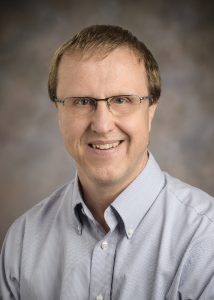A group of researchers led by a Wright State University Boonshoft School of Medicine professor may have found the first-ever therapy for intensive care unit acquired weakness in patients.
The research group headed by Mark M. Rich, M.D., Ph.D., professor of neuroscience, cell biology and physiology, identified a defect in electrical activity of spinal neurons as a new contributor to intensive care unit acquired weakness.
In addition to Rich, the research team included Paul Nardelli, of the Georgia Institute of Technology; Randall Powers, Ph.D., of the University of Washington; and Tim C. Cope, Ph.D., of the Georgia Institute of Technology.
The researchers found that treatment with lorcaserin, a U.S. Food and Drug Administration-approved medication for weight loss, restored strength in critical illness.
“This research may provide the first-ever therapy for intensive care unit acquired weakness,” said Rich, who teaches medical and graduate students at Wright State in the Department of Neuroscience, Cell Biology and Physiology and the Department of Neurology. “Before our study, there has been no treatment other than waiting for the patient to improve on their own. Our findings suggest that treating patients with a diet drug may improve their strength.”
Their research was published in the Dec. 17, 2017, issue of Annals of Neurology. The study, “Increasing Motor Neuron Excitability to Treat Weakness in Sepsis,” also was highlighted in Science Translational Medicine in an article in the Dec. 13, 2017, issue.
The Wright State University Boonshoft School of Medicine is a community-based medical school affiliated with seven major teaching hospitals in the Dayton area. The medical school educates the next generation of physicians by providing medical education for more than 459 medical students and 458 residents and fellows in 13 specialty areas and 10 subspecialties. Its research enterprise encompasses centers in the basic sciences, epidemiology, public health and community outreach programs. More than 1,500 of the medical school’s 3,328 alumni remain in medical practice in Ohio.


 Wright State to launch mobile street medicine project for underserved patients in Dayton
Wright State to launch mobile street medicine project for underserved patients in Dayton  Top 10 Wright State Newsroom videos of 2024
Top 10 Wright State Newsroom videos of 2024  2025 Alumni Achievement Awards celebrate distinguished Wright State community members
2025 Alumni Achievement Awards celebrate distinguished Wright State community members  Wright State alum partners with alma mater to brew a Raider-branded beer
Wright State alum partners with alma mater to brew a Raider-branded beer  Expanded agreement provides Air Force researchers more access to work on Wright State’s campus
Expanded agreement provides Air Force researchers more access to work on Wright State’s campus 